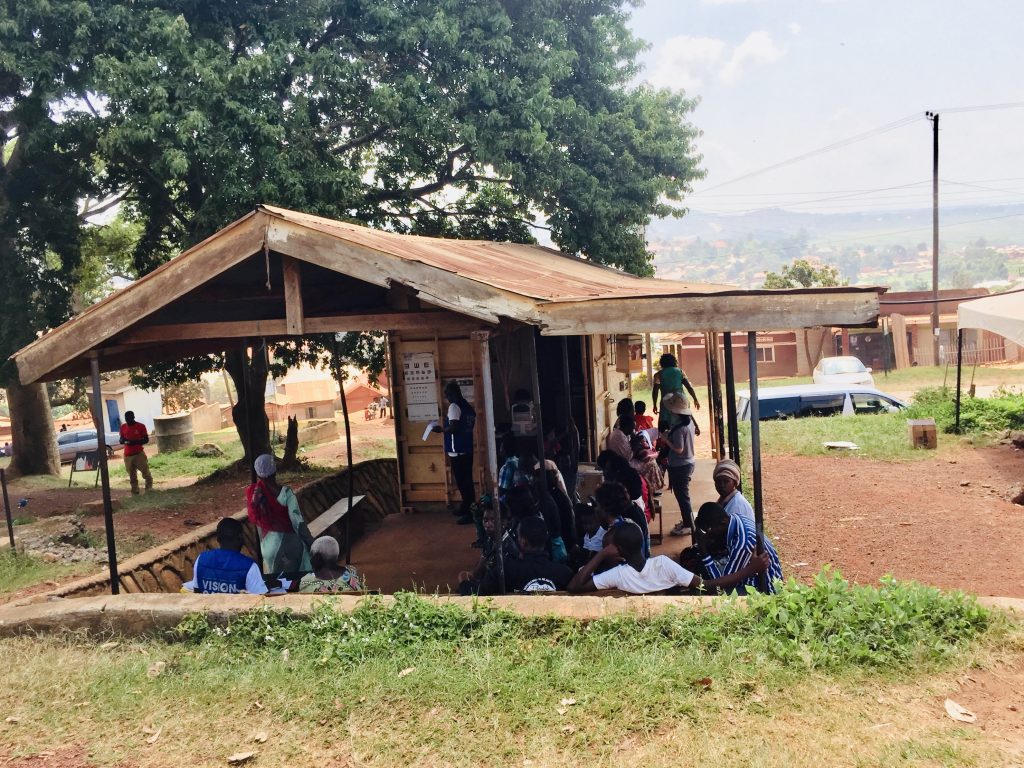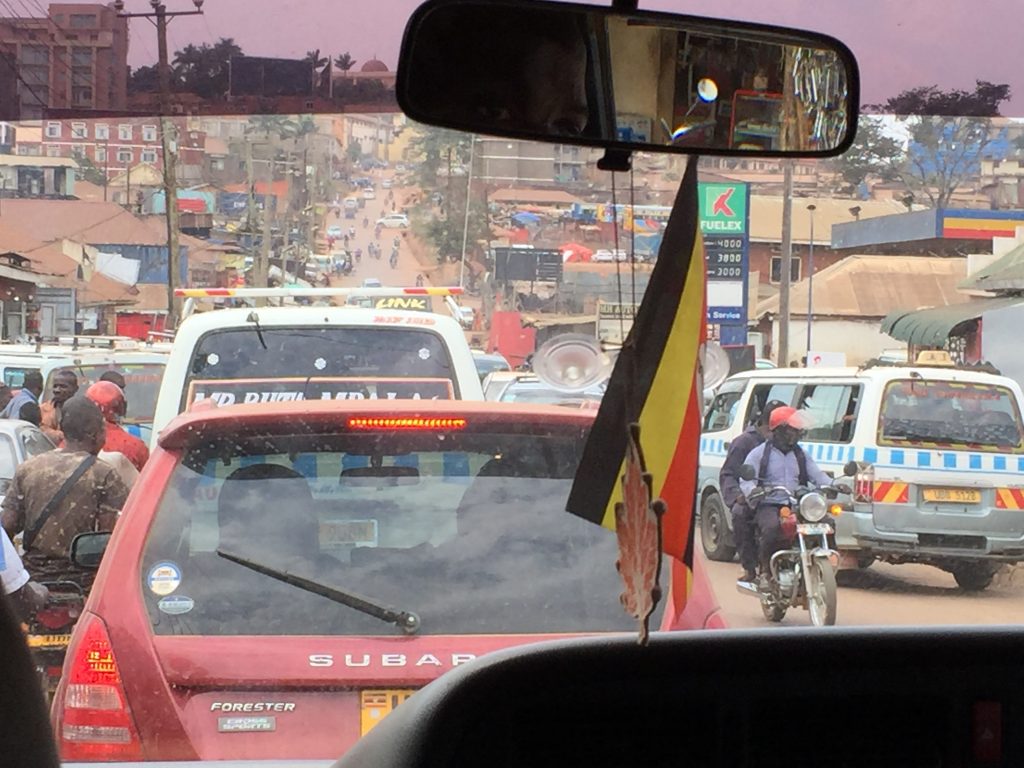Kate McGowan RN
It’s a week into my four week Uganda trip and I find myself in a not-unfamiliar environment. It feels like I’ve been here before: Poverty and lack of resources in the tropics tends to send cities into a familiar decline. It’s warm, humid and hazy, the air is heavy with wood smoke, diesel and leaded petrol fumes from the old cars that inhabit the roads.
Noise is erupting from chaotic traffic, with endless horn blowing- in a signaling language we will never understand. Taxis are old Toyota Hiace vans packed with 200% more than the recommended capacity. Motorbikes ( called boda-boda) are in abundance. Unfortunately, they are necessarily the main method of transport. I have a reluctance to use them. I have seen too many boda-boda accidents already, however, this time there is no choice. I have been found by a man called John. John has a big white smile and seems keen to look after me. Perhaps he understands the dangers as he wears a helmet…he even has one for me. Ill-fitting and sweaty, I put it on gratefully.
The clinic I am going to is in Kajjansi, a township that is halfway between Entebbe and Kampala;. population of about 7,000. The clinic is part of a public health program, 'governed' by the Ugandan Ministry of Health, who like it to be open but don’t fund it well. The clinic is a series of buildings, tents and shipping containers - some with their own verandah. The clinic is located on land donated by the community and has been serving the community for a few years.
The focus is on public health, HIV / TB / Malaria diagnosis and treatment, family planning, antenatal care and delivery, immunisation. There is even a tent-theatre for adult male circumcisions. The clinic has no running water. There is limited electricity - only the vaccine fridge enjoys this luxury. There are no gloves, no dressings, gauze or band-aids, no alcohol swabs, no alcohol gel for hands. The antenatal clinic used only an old fashioned Pinard Horn for listening to the growing baby's heart. The birthing suite housed two vinyl examination tables up against each wall, a large pot of clamps and scissors which had previously soaked in boiled water. A small sheet of plastic 1 metre square is purchased by the mothers to catch the body fluids. There are no pain killers, no antibiotics, and no local anaesthetics. I was involved in several births at the clinic, not so much as a health professional, but as an awkward bystander.
I didn’t see a doctor. The nurses seem to just do their jobs. I am in awe of their experience and capabilities. I was overwhelmed by how much could be achieved with so little, how the services could reach out to so many people. Each day, hundreds of people would attend the clinic for various reasons, all in an orderly manner, on African time. It is hard not to make comparisons between our first world healthcare of Australia and the care available in the developing world of Uganda. During my brief stay, I don’t know if they learned much from me, however, I returned to my own world having learned much from them.
I highly recommend volunteering around the world, even for a short time. It is a wonderful way to experience a foreign country, be immersed in their culture and learn about their daily life. Wonderful in the original sense of the world - full of wonder.

